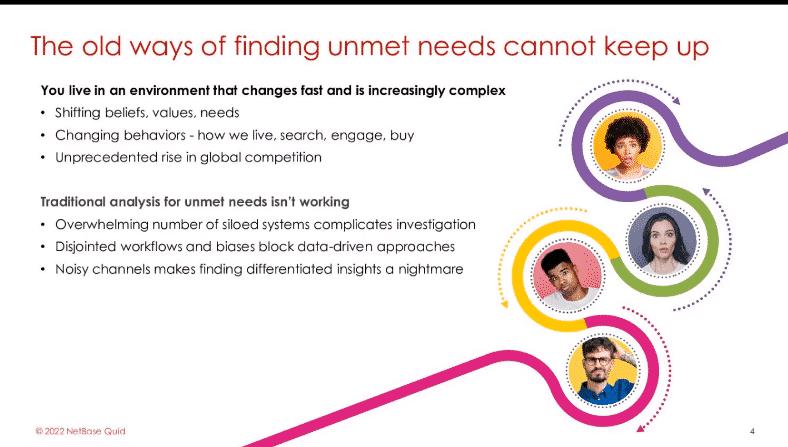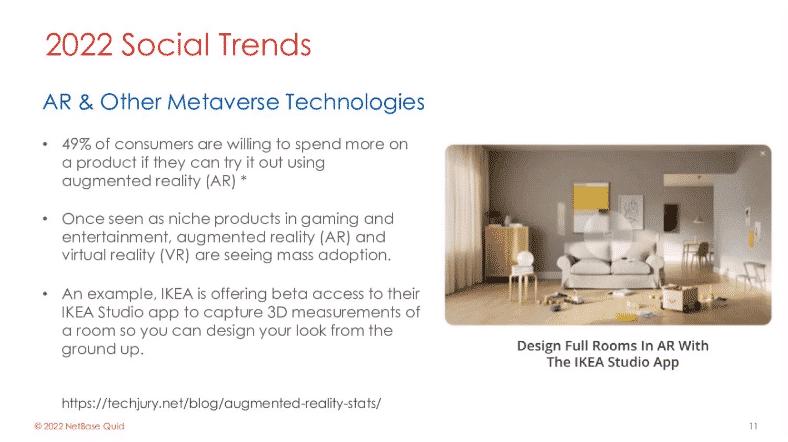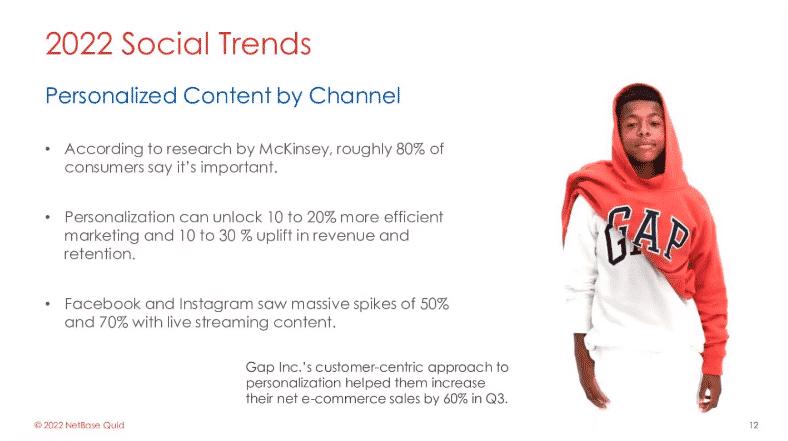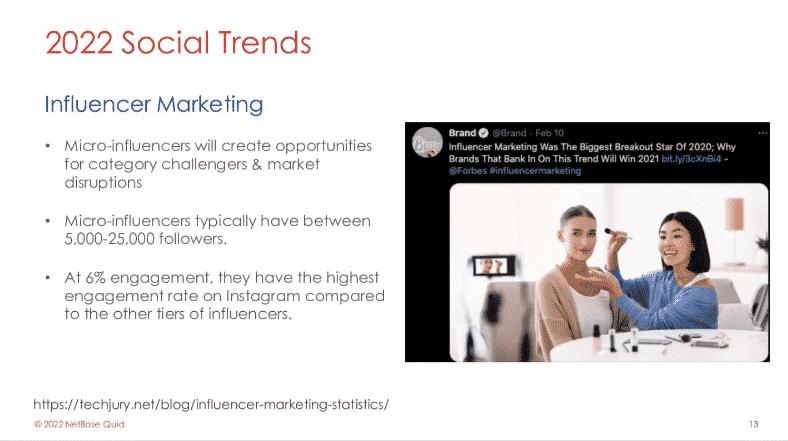3 Social Media Trends Impacting Marketing In 2022
2022-03-01 13:19:00
The social media landscape has changed drastically. Here's how marketers can prepare for the latest trends.
Although brands have been leveraging social media to market their products and services for over two decades, there have been major shifts in marketing practices over the past few years. New trends — spurred on by the ongoing pandemic and emerging technologies — are forcing marketers to continuously update their strategies.“Things are changing fast — things are incredibly complex,” said Mike Baglietto, the global head of market insights at market research company NetBase Quid, in a recent webinar. “Finding these unmet needs and shifts in customer behavior is becoming important for our businesses to succeed. We need to be able to sift through information quickly to find these insights to help drive our strategy.”Unfortunately, traditional methods of social media analysis are no longer working. According to Baglietto, they’re difficult, time-consuming, and no longer work in today’s world: “This is partly because there’s so much data, but also because it’s siloed in a number of different systems with disjointed workflows.”
 Source: NetBase Quid
Source: NetBase Quid
On top of these fragmented data issues, more and more marketers are searching for the latest insights and technologies to help them prepare for social marketing changes on the horizon. To help with this, here are three of the most important social media trends to look out for in 2022.
Virtual and augmented reality technologies
“There have been so many different changes to ways people are interacting on social channels,” said Harvey Rañola of NetBase Quid in the same webinar. “One of the things we’ve been seeing as an emerging trend — even before Facebook decided to rebrand their corporate entity as Meta — is augmented reality.”He added, “Before that, we were already seeing these trends in how brands were engaging with potential customers, enabling them to virtually try out their products.”Rañola highlighted Ikea’s virtual design rooms as an example, which let customers map out the furniture they had in their online inventory using an AR interface. Other big brands, such as Nike, leveraged technologies to allow people to measure their feet and try on shoes virtually.

Source: NetBase Quid
Brands now have the opportunity to improve customer engagement with new technologies. Here are some VR and other metaverse technologies brands can consider implementing to improve social media interactions:
· Photo filters featuring your brand’s logo
· Virtual tours of places of customer interest
· QR codes that, when scanned, immerse users in AR experiences
Personalized marketing content
VR/AR aren’t the only major trends floating around social spaces. Brands have begun leaning into personalized content more heavily than ever.“Personalization is something that we are all familiar with … At the heart of it is delivering content that is relevant to your users,” Rañola said. “They expect their content to be relevant, and that encourages them to engage with you.”Consumers today expect personalized content, especially on their social channels. According to a report from Sprout Social, 61% of consumers expect companies to provide personalized experiences on social media based on previous brand interactions, and 59% expect companies to read and analyze what they post on social media.

Source: NetBase Quid
However, marketers walk a fine line when it comes to personalizing social media content — brands can unwittingly venture into “creepy” methods of interaction when using data consumers aren’t aware has been shared. A study conducted by CheetahDigital found that roughly 52% of social media users find ads based on recent shopping experiences from other sites creepy.The best personalized social content is both highly relevant and based on information users have consented to share with brands. This not only builds consumer trust but also fosters greater levels of engagement with increasingly niche audiences.“When we think about the type of content being talked about and streamed on Facebook and Instagram, most of these are related to people’s interests,” Rañola said. “The ways people are consuming content are becoming extremely niche.
Marketing influencers and detractors
Influencer marketing — the process by which brands use external content creators to communicate their messages — has grown a lot as a result of the pandemic. More brands have found influencers’ less scripted styles to be more enticing to consumers.“Influencers continue to be a very important part of what your marketing program should look like,” Rañola said.He then referred to an Adweek influencer study, which found that influencer marketing increased ROI — companies make roughly $6.50 for every dollar spent. But the benefits go beyond improved profits — a survey from Matter Communications found that consumers often trust influencers more than the brands themselves.

Source: NetBase Quid
“The influencers and the clout that they have with their followers go hand-in-hand with the personalization of content and driving engagement,” he said. “These influencers are not going to be going away anytime soon … Influencers are key to being able to unlock better ROI and gaining greater reach within your space.”Marketers that are available to personalize digital interactions through the latest influencing strategies and technologies will have the best chance of succeeding in the wake of social media trends in 2022 and beyond.



